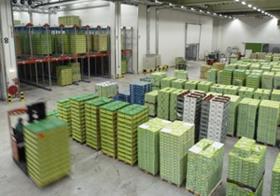
Dutch fresh produce company The Greenery says it will continue to work closely with its growers in order to reduce costs along the supply chain, but has insisted it will not revert to its previous turnover-based grower levy model, following recent criticism of the system.
The company yesterday confirmed plans to lower the tariffs and levies it charges member growers from the start of next year, following a 15 per cent reduction in its overall supply chain costs during the course of 2009.
Growers who sell their products through The Greenery will therefore pay less in 2010 to cover the cost of overheads incurred by the group in delivering those products to market, including areas such as logistics and marketing.
At the start of this year, in a major departure from its previous turnover-based levy model, The Greenery introduced a new system of payments based on what it referred to as an 'activity-based' costing model.
'The trouble was it looked like all of the growers were paying more, because what the new system did was expose a lot of the hidden costs involved,' said an industry source. 'There was a lot of discussion and indeed some criticism about it because, for the first time, Dutch growers were being confronted with the actual costs they were incurring.'
According to The Greenery, increased efficiency in a number of areas – including centralisation of packing areas, sharing of transportation and a scaling back of personnel costs – has led to the fall in costs this year.
'What we were aiming to do with this new system was to increase transparency, to introduce a cost-based system and to increase the overall level of cost-awareness throughout the supply chain,' said a spokesman for the group. 'There was a huge need for greater transparency in particular.'
Further adjustments are expected to be made in the next 12 months, the spokesman added. 'This is something we are continuously looking at,' he said. 'In the coming year, we will be striving to help our growers streamline their supply chains in other areas, such as packaging.'



